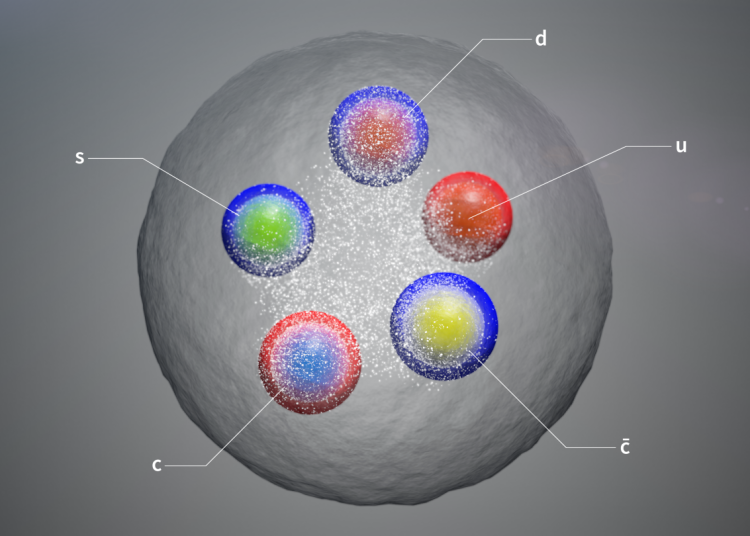Quarks are elementary particles and come in six flavours: up, down, charm, strange, top and bottom. They usually combine together in groups of twos and threes to form hadrons such as the protons and neutrons that make up atomic nuclei. More rarely, however, they can also combine into four-quark and five-quark particles, or “tetraquarks” and “pentaquarks”. Particles made of quarks are known as hadrons.
While some theoretical models describe exotic hadrons as single units of tightly bound quarks, other models envisage them as pairs of standard hadrons loosely bound in a molecule-like structure. Only time and more studies of exotic hadrons will tell if these particles are one, the other or both.
Most of the exotic hadrons discovered in the past two decades are tetraquarks or pentaquarks containing a charm quark and a charm antiquark, with the remaining two or three quarks being an up, down or strange quark or an antiquark. But in the past two years, LHCb has discovered different kinds of exotic hadrons.
Two years ago, the collaboration discovered a…









































